What is CERN?
CERN- the Conseil européen pour la recherche nucléaire!
As a person who doesn’t speak French, these words were just a random collaboration of letters until I had my first science lessons in 9th grade. In my school, we had the opportunity to choose what we wanted to do in 4 extra lessons in the week: We either could learn French (I guess this train has gone forever😅), we could do music and art, or we could have 4 extra lessons of science. I struggled for quite some time, to really decide on doing the science profile, because I considered myself neither interested nor good at physics, but in the end, my love for chemistry defeated my fear of physics. Little did I know, that these extra lessons of physics would make it possible for me to spend a week at one of the largest and most respected centers of scientific research: CERN.
So: lets try to translate this random collaboration of letters: “Conseil européen pour la recherche nucléaire” simply means “European Council for Nuclear Research” (Well it wasn’t that hard after all, was it?). This “Council” was ratified in 1954 by 12 western European countries with the goal to create a European atomic physics laboratory. This laboratory should not only unite European scientists, it should also make it possible to share the increasing costs of nuclear research facilities. (If you want to learn more about the history of CERN, check out this website: https://timeline.web.cern.ch/origins) After the laboratory was built, the provisional council was dissolved and the name changed to “Organization of Nuclear Research” but pretty much nobody is able to pronounce CERN properly, which is why we still use the acronym CERN today.
Now we have cleared up the mystery around the acronym CERN, but we haven’t really come closer to the question what really happens at CERN. My science teacher in 9th grade explained it to me like this:
Putting CERN in a Nutshell
(For all of you who prefer videos over text, I recommend this clip to get an insight to the research at CERN: https://www.youtube.com/watch?v=i0qjDZH-p7E)
“CERN is the largest Particle physics laboratory in the world. It basically is a little town itself at the border between Switzerland and France. But most of it is invisible, about 100 meters underground: 34 km of tunnels and caves the size of cathedrals (I know, my teacher really knows how to impress small 9th graders 😉 ). This is were the experiments of the physicists take place. Scientists from all over the world come together to explore the secrets of the universe at CERN.
Stars and planets, water, air and humans, all matter consists of atoms. The atoms in turn consist of electrons and a nucleus; the nucleus of protons and neutrons. And those then again consist of quarks. In the Large Hadron Collider (LHC), the most modern particle accelerator, the researchers collide particles at almost the speed of light. This enables them to examine the quarks and other particles. Particles that only existed shortly after the birth of the universe, fractions after the Big Bang, when all energy became matter.”
This was usually the moment when I put my hand up and asked annoying and unimportant questions, like: “why do the physicists collide atoms?” It was very hard for my teacher to answer these kind of questions at the time, because we all knew pretty much nothing about particle physics and therefore she couldn’t answer any question without bringing up thousands more.
“Well, you do know about Einstein’s mass-energy equivalence E=mc2? When you collide two atoms with almost the speed of light, a lot of energy gets released. This energy then transforms into matter, the smallest fraction of matter that we know of to be exact: quarks.
So, where were we: In the accelerators at CERN we can restore these conditions shortly after the big bang and thus shed light on the questions of the universe: Why do particles have a mass? What is dark matter? Why is there only matter and no antimatter left? And what exactly was that matter shortly after the Big Bang like? Research at CERN will help us understand our natural laws better and reveal some of the greatest secrets in our universe. In the course of their research, the CERN scientists have made many discoveries that affect our daily lives. The technology of particle detectors, for example, is now also found in safety scanners and medical devices. And (drum roll!!!😜) the World Wide Web was invented at CERN. But CERN offers more than just groundbreaking new insights into our universe. It was one of the first joint European projects and is still an example of European cooperation with its 23 member states. This is why one of CERNs mission statements is “Science for peace” .”
That was pretty much all it took. My teacher showed us a few more photos and videos of her time at CERN and I was hooked. I wanted to understand everything that she had just told us and I wanted to learn everything I could about particle physics. Without even realizing it, I started to love the subject which I was so hesitant about in the first place.
One international masterclass and a few presentations on the Higgs Boson later, I was ready to apply for a workshop at CERN! (This is the website of the organization which I went with, I’m sorry that it is in German: https://www.teilchenwelt.de/angebote/cern-workshops/)
My time at CERN
What made the experience even better for was that two of my friends also applied for the workshop and we were all accepted! The organisation paid all travel expenses, board and lodging, therefore we didn’t have to think twice to pack our bags and look forward to the program! We flew to Geneva with the plane and took the train to the research site where we met all the other students from all over Germany who were also interested in particle physics.
The first few hours at the site were already breathtaking. We were welcomed at CERN in the very room where the discovery of the Higgs Boson was announced (I sat on the chair on which Peter Higgs sat – I know, I am fangirling over strange things😅); we passed the room in which the world wide web was developed and we ate in the canteen next to a few of the smartest scientists in the world.
In the following days we were showered with new information and visited many fascinating sights. I don’t want to go into to much detail, I am afraid I might bore you with all of my fangirling, which is why I decided to show you some pictures instead:
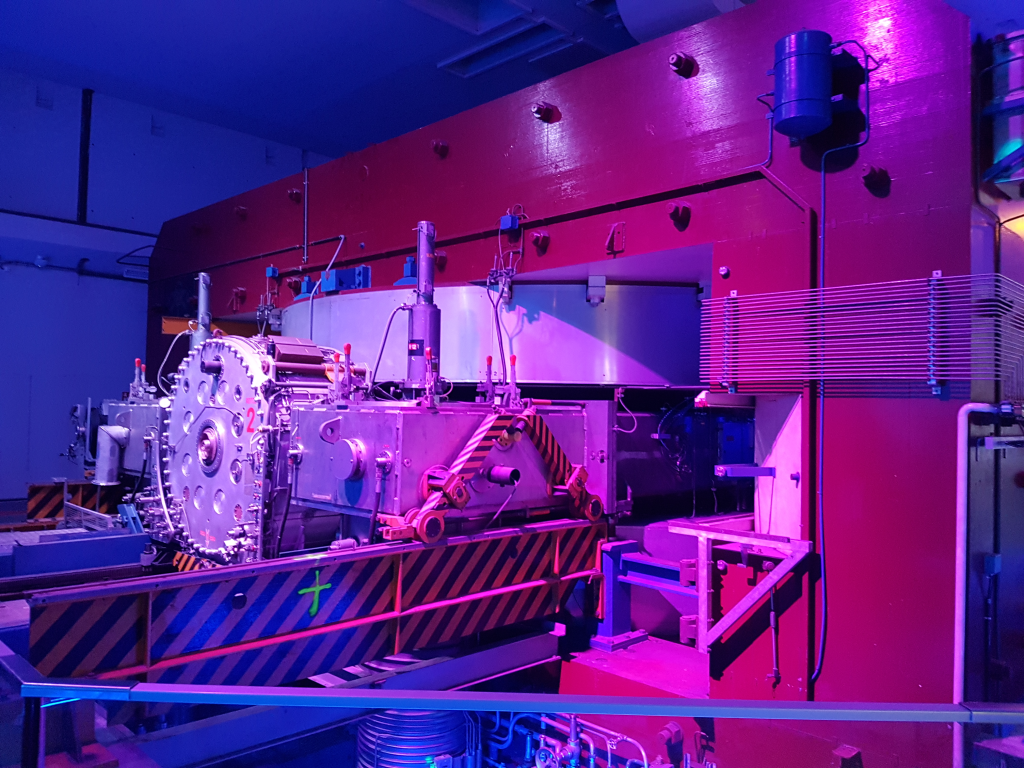
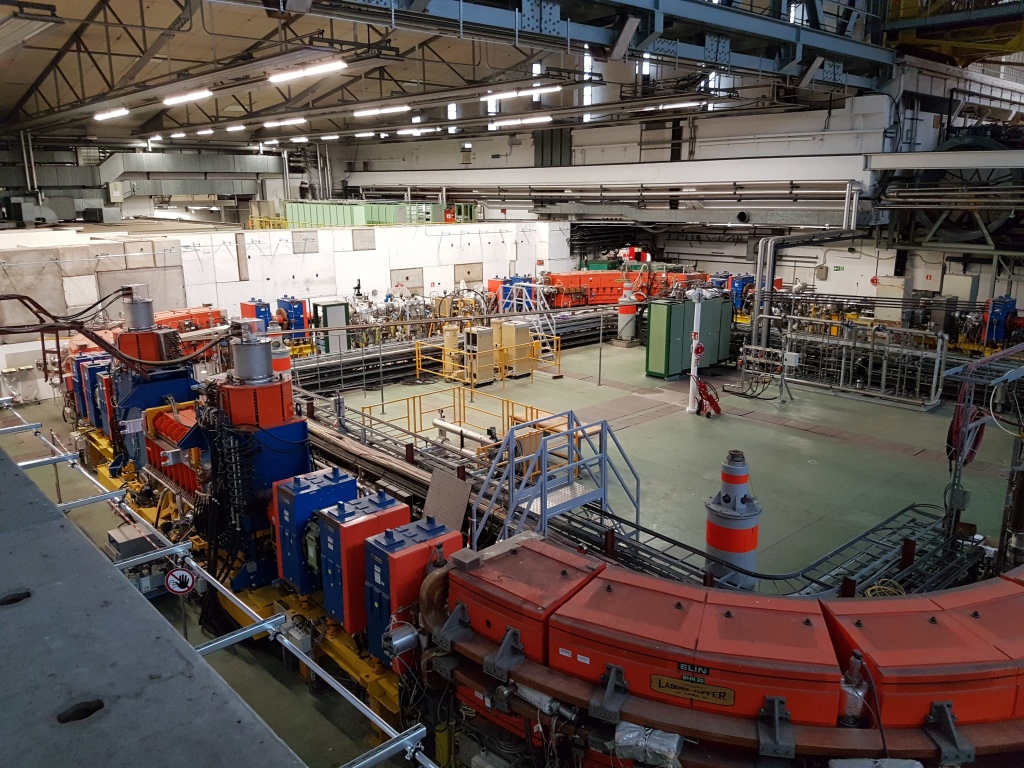
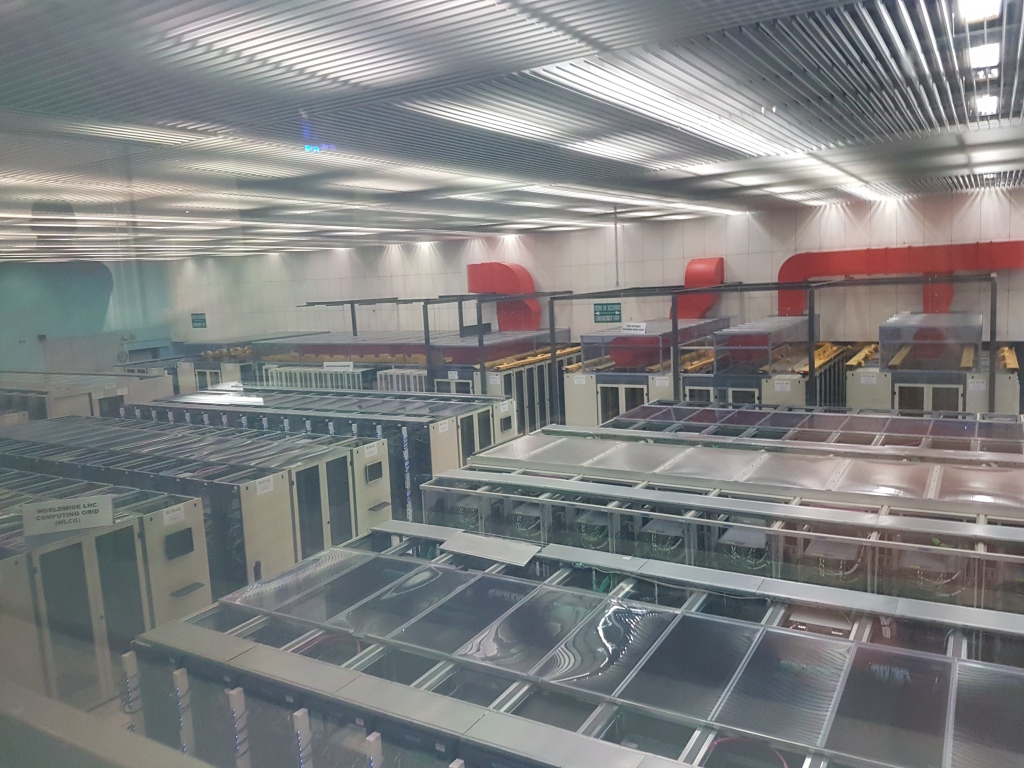
(just imagine how much Data that is, there are up to 800 million collisions per second!), a heaven for all fans of informatics! I am so sorry for the blurred picture, we could only take photos through a glass window.
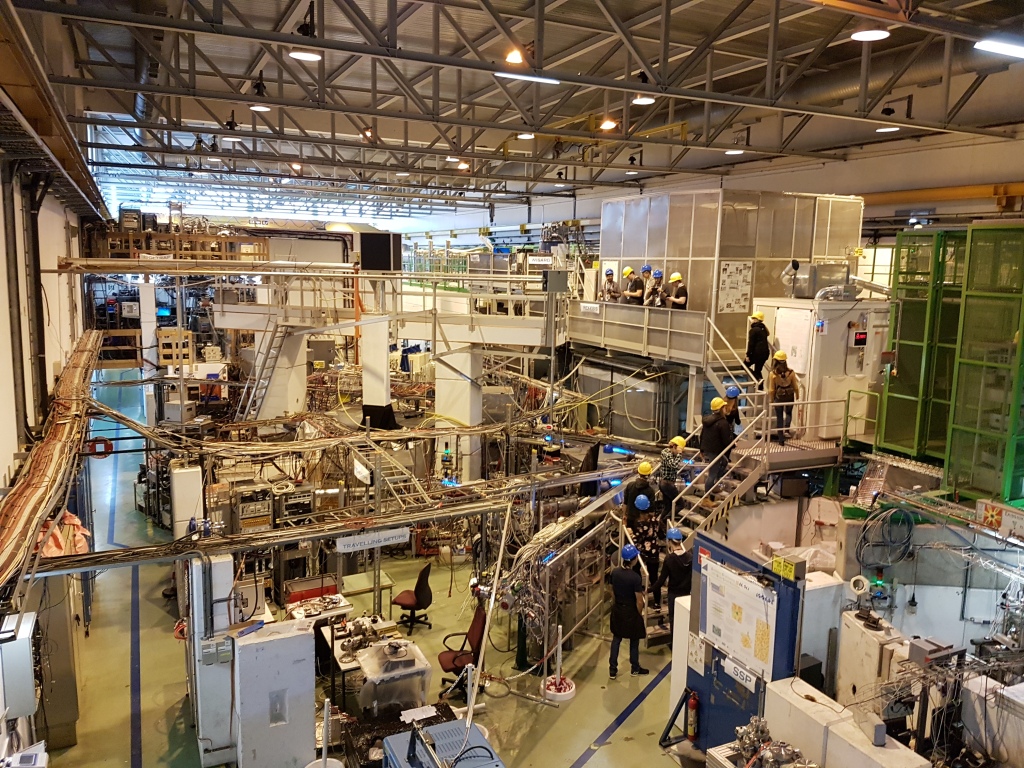
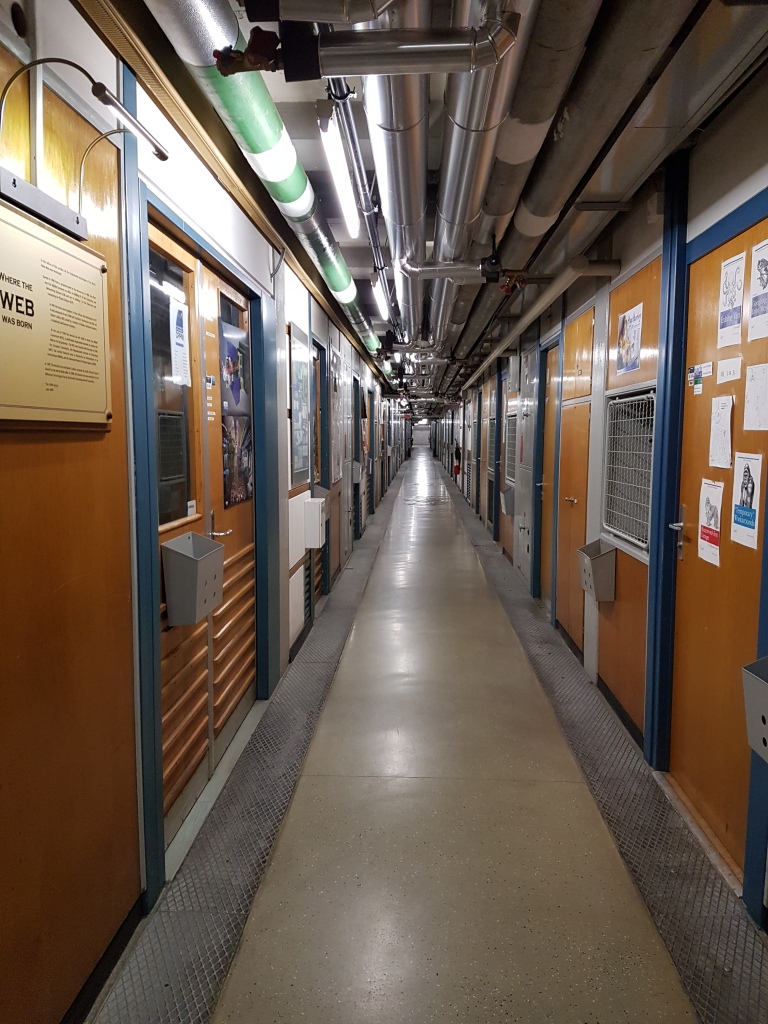
And the highlight: We visited CMS! One of the giant detectors at the LHC. In fact the CMS is 21 metres long, 15 metres wide and 15 metres high and lies about 87 meters underground. This is one of the caves the size of cathedrals which my teacher was talking about! I have never seen anything more exciting.
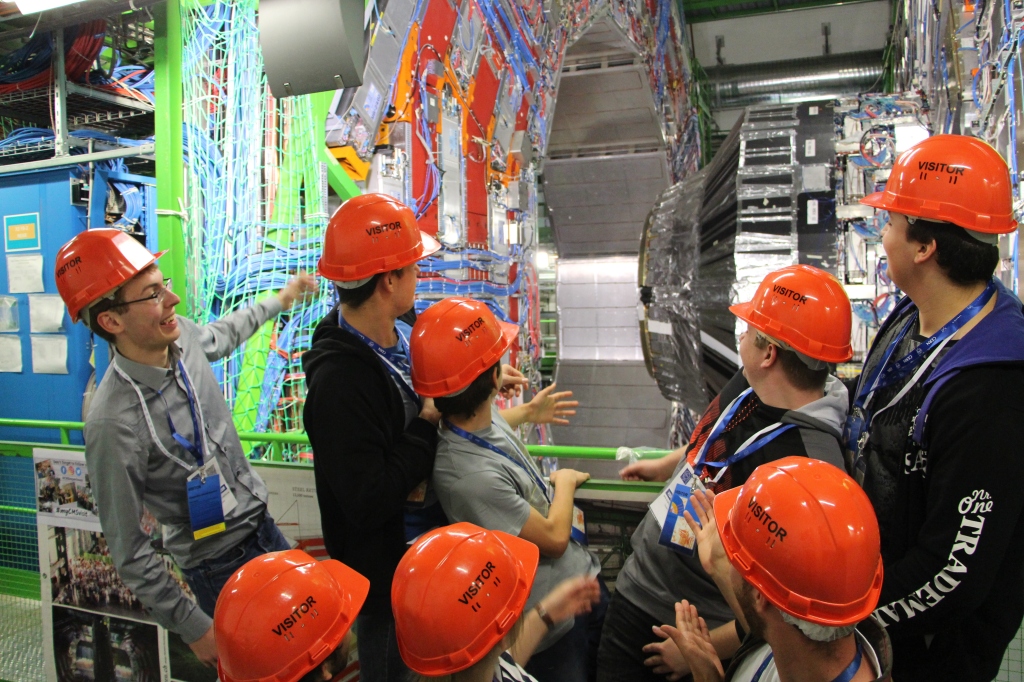
But the program didn’t only consist of excursions and presentations: we also had game nights, an escape game, we did a scavenger hunt to explore Geneva, ate cheese fondue and enjoyed our time together! In the end, the best thing about the experience was spending time with so many other students who are interested in the same things as I am. Everyone, without exception, was extremely nice and I met a few of my favorite people there.
Another thing that I loved about my time at CERN was getting to know so many scientists and see how they work first-hand. It is incredible how relaxed and down-to earth most of these brilliant physicists are. Even though some of them are practically the superstars of their field, they sit in the canteen with their children and work in tiny and old offices just like anyone else. Getting a glimpse of the mind-set of scientists in fundamental research also helped me a lot to figure out what I want to study in university myself. I am very grateful for this opportunity and I can only recommend it to you to try to spend some time at a University, CERN or any research facility.
How you can get to CERN
Of course you can always visit CERN as a tourist, there are many guided tours of the research facilities (Unfortunately, all public visits of CERN are cancelled right know due to the COVID-19 outbreak, but you can visit CERN online) but you will get to learn way more about CERN if you stay there longer and take part in a programme, for example:
- To all of you who are from Germany: I can only recommend the organization Netzwerk Teilchenwelt, this is the organization I went with. You can apply for the program after you took part in at least one masterclass and have shared your knowledge of astro / particle physics with others through presentations. The organization will cover all expenses and you can look forward to an exciting week!
- Summer Student Program: You can apply for this summer school, if you are currently studying for a Bachelor or Master degree in Physics, Engineering, Computer Science or Mathematics. You will stay at CERN for 8-13 weeks and work on an advanced technical project in an experimental or engineering team.
- As a full-time student at undergraduate (post-secondary) level you can also apply for a short term internship of 1 to 6 months.
- If you are looking for a place where you can work on your thesis, check out the Doctoral Student Programme. (This is definitely something that I am going to do!!!)
- You can also write your final project (Bachelor or Master) at CERN with the Technical Student Programme.
- Students who are specializing in administration can apply for the Administrative Student Programme.
- If none of the above applies to you, you can always check the website of the university which is the closest to you and see, if they offer any trips to CERN (this is how I found Netzwerk Teilchenwelt )
You can check out all programmes that CERN directly offers at this website: https://careers.cern/students